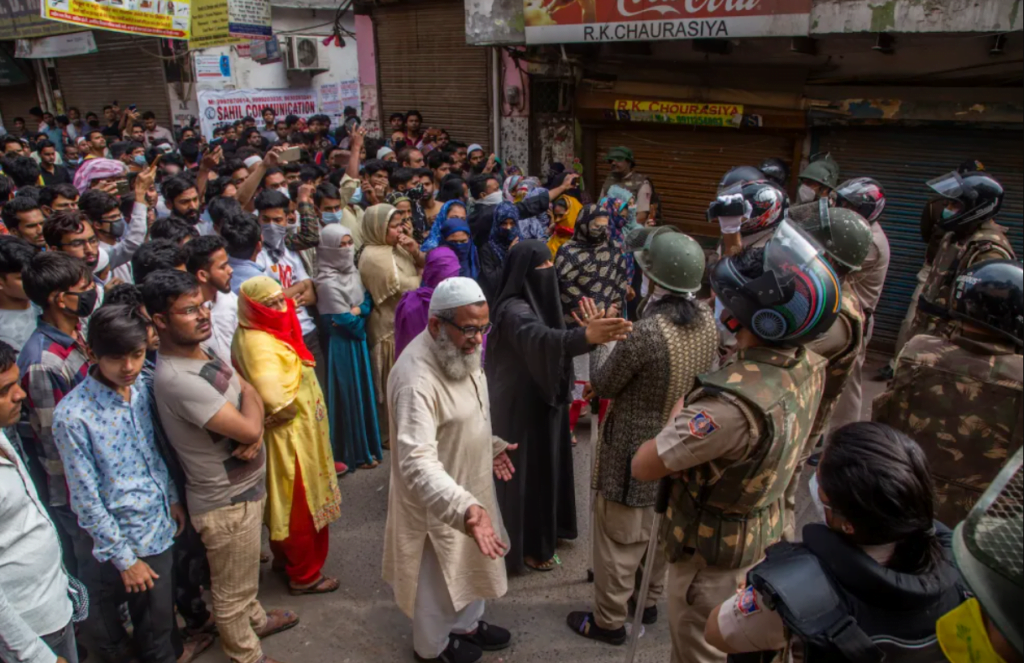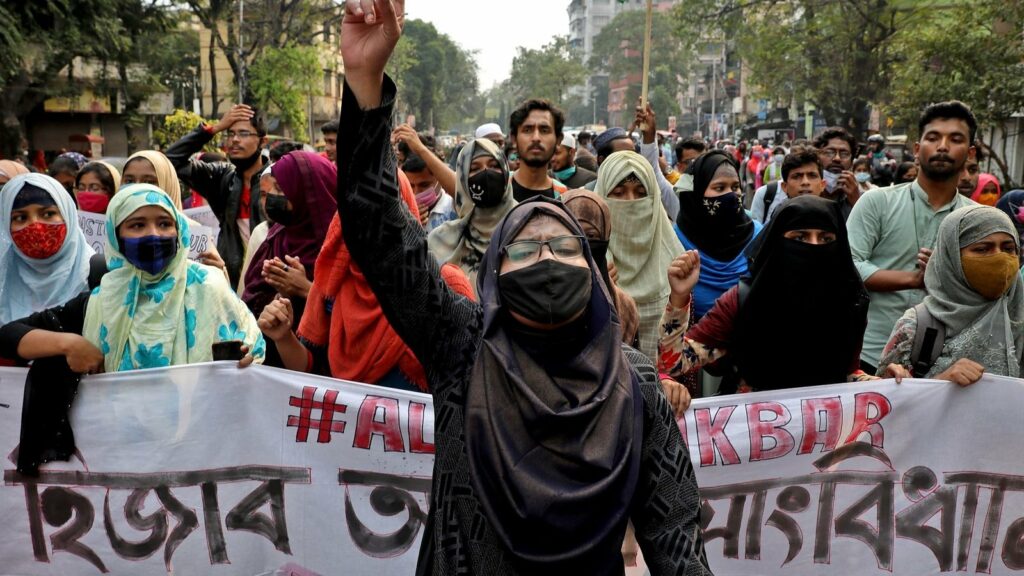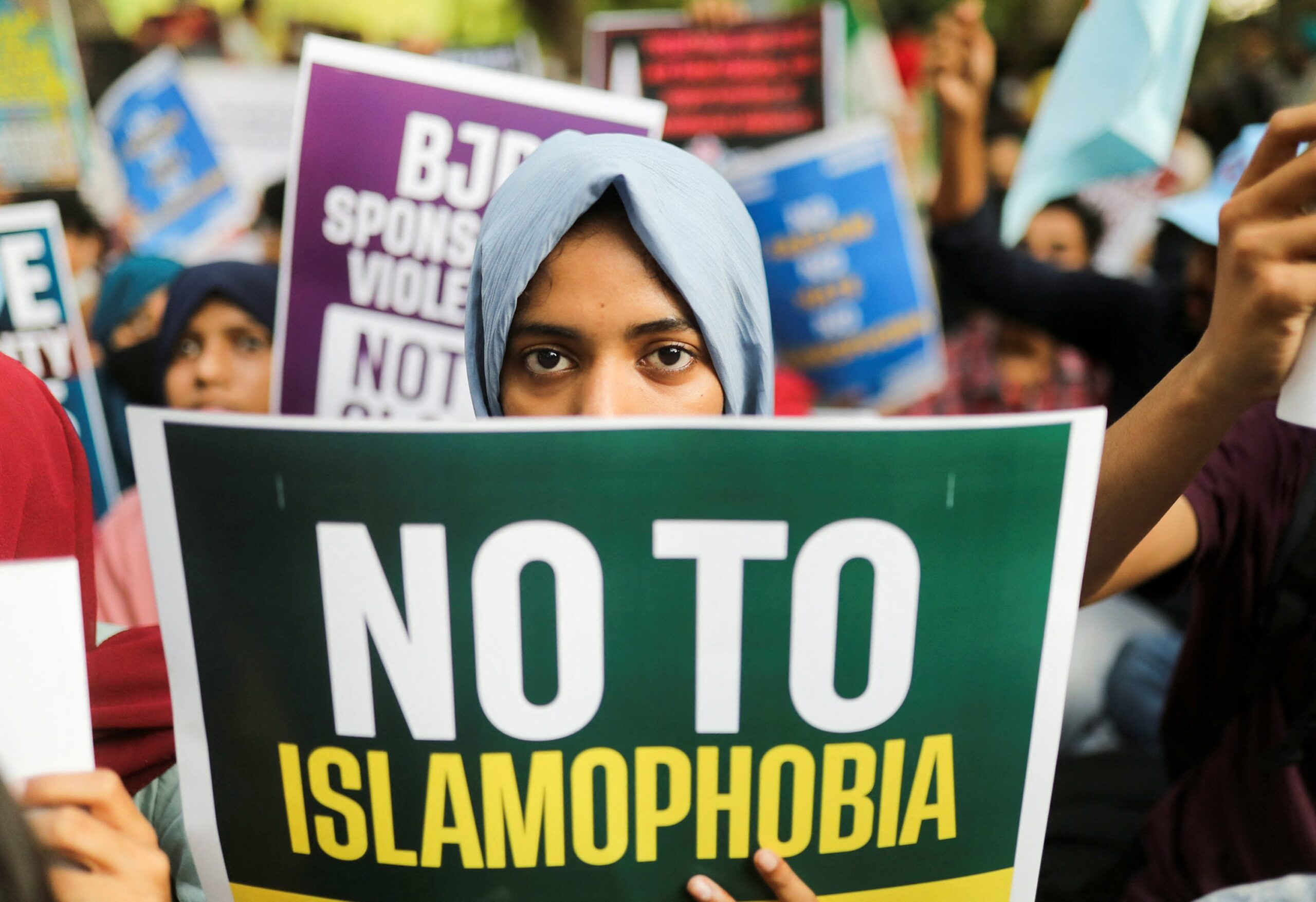During an election rally at Banswara in Rajasthan on April 21st, Narendra Modi delivered his latest hate speech against Muslims in the country. Addressing the crowd, he said that the manifesto of the Congress was aimed at distributing the property of the citizens (read as Hindus) to the ‘infiltrators,’ who have ‘more number of children,’ (read as Muslims).
Using a speech delivered by Manmohan Singh at the National Development Council in 2006, where he talked about the upliftment of the minorities, Modi has effectively upped BJP’s game of fearmongering by saying that Muslims will have the first right over the country’s resources if Congress is elected. However, Modi’s incendiary remarks did not end there. He further warned the audience in Rajasthan that the ‘mangalsutras‘ worn by women would be at risk if the Congress were elected, effectively appealing to Hindu sentiments and invoking cultural symbols to stoke fear and rally support for the BJP.
Even though the speech was not the first time where the Prime Minister expressed his hatred towards Muslims, it is an announcement of the BJP’s strategy to disregard Muslim lives in the country.
While the global media highlighted Modi’s ‘hate speech,’ the Election Commission’s first response was to decline to comment on Modi’s spewing of venom against Muslims at the election rally. Communal propaganda is treated as a crime under the People’s Representative Act, through which Bal Thackeray was banned for six years in 1999. Finally, when an action was taken, a notice was sent to BJP President J.P. Nadda, not Modi. His speech was a significant event in organised Islamophobia in India, codifying and legitimising the hatred.
The hate against Muslims has now been the most effective election tactic, an efficient coverup of administrative fallacies. The propagation of anti-Muslim sentiment has become a disturbing norm in Indian politics, with inflammatory rhetoric and discriminatory policies gaining traction under the guise of nationalism and security concerns. Modi’s speech represents a dangerous escalation in this trend, as it not only exacerbates existing communal tensions but also normalises and institutionalises hate and bigotry.
Tropes in Modi’s speeches
In Modi’s recent speech, one of the prominent tropes employed was the term “infiltrator.” Since coming to power in 2014, Modi and his allies have consistently utilised labels such as “infiltrators” and “outsiders” to target Muslims, perpetuating a divisive narrative of “us vs. them.”
However, the term “infiltrator” holds particular political significance in the context of the Citizenship Amendment Act (CAA), which was a culmination of a systematic effort to marginalise Muslims in India. This deliberate targeting of Muslims through codified laws represents a disturbing form of weaponised hate, with the BJP sharpening its rhetoric through constant reminders of the purported threat posed by Muslims.

By isolating and attacking Muslims in this manner, the government is not only perpetuating discrimination but also eroding the very foundations of secularism and democracy in India, which is supposed to be reinforced through free and fair elections.
Another one of Modi’s designated synonyms was Muslims as ‘people with a high number of children.’ However, this is not the first time Modi has used this label to spread hatred against Muslims. During the Gujarat Gaurav Yatra, a campaign launched by Modi following the Gujarat pogrom, he addressed a crowd in Becharaji and made derogatory remarks about relief camps of Muslims, referring to them as “child–producing factories.” This dehumanising language not only trivialised the suffering of those displaced by the violence but also perpetuated harmful stereotypes about Muslims.
According to the right-wing’s guide to annihilate Muslims in India, Muslims are people with four wives and twenty-five children (Modi has also made the “hum paanch, hamare pachees,” remark about Muslims in the Gaurav Yatra mentioned previously).
Such stereotypes about Muslims have led to the formation of terms like ‘population jihad,’ which alleged that Muslims were attempting to gain power in India by increasing their population. These attempts to instigate fear among the Hindus were effectively used by the right-wing, with BJP MP Sakshi Maharaj asking Hindu women to “produce four children to protect the religion.” Even though the Muslim fertility rates in the country are falling due to limited access to health services, these are ignored by the propaganda machinery that constructs the torture of the Hindus by their Muslim enemies.
The myth of the Hindu suffering
According to BJP’s propaganda, the Hindu community, comprising nearly 80 per cent of India’s population, is portrayed as being exploited by the Muslim minority, which constitutes only 14 per cent. Beyond the demographic statistics, Muslims are facing systematic oppression, with their access to opportunities curtailed, their social lives policed, and their rights denied. This fact, is, however, conveniently ignored to suit the religious politics at play.

The BJP’s rhetoric often revolves around the myth of Hindu suffering, amplified by allegations of minority appeasement by the Congress party, a key element of their election strategy. In this speech, Modi claimed that the Congress manifesto advocates for wealth redistribution to Muslims, further perpetuating the notion of preferential treatment for minorities.
According to The Hindu, he has fabricated this by combining the sections on wealth inequality in the manifesto with former Prime Minister Manmohan Singh’s remarks in 2006, where he emphasised the need to establish plans to uplift the minority sections. This manipulation serves to fuel communal tensions through fearmongering and divert attention from substantive issues of governance and socio-economic development.
Religion over Rationality
Even after two decades of ruling, Modi’s electoral strategy resorted to communally-charged statements and divisive rhetoric to garner votes. Instead of accusing Congress of its ‘Muslim-appeasement‘ policies, he could not convince his voters through India’s growth under the National Democratic Alliance, which is non-existent. The right-wing narrative has adeptly diverted attention from the development indices, instead focusing on symbolic issues such as the ‘mangalsutras,’ traditional Hindu symbols of marriage, which they claim will be threatened by the opposition.
By invoking the imagery of the ‘mangalsutras‘ and appealing to Hindu sentiments, Modi effectively tapped into the psyche of his support base, rallying them to defend what they perceive as threats to their cultural identity and honour. This manipulation of religious symbols highlights the pervasive influence of religion in Indian politics. Demonising minority groups and framing them as existential threats becomes an expedient means of rallying the majority population to the cause.
About the author(s)
Hajara Najeeb is an Independent Researcher working on issues of Minority Rights and Affairs, Gender, and Politics.






Nonsense